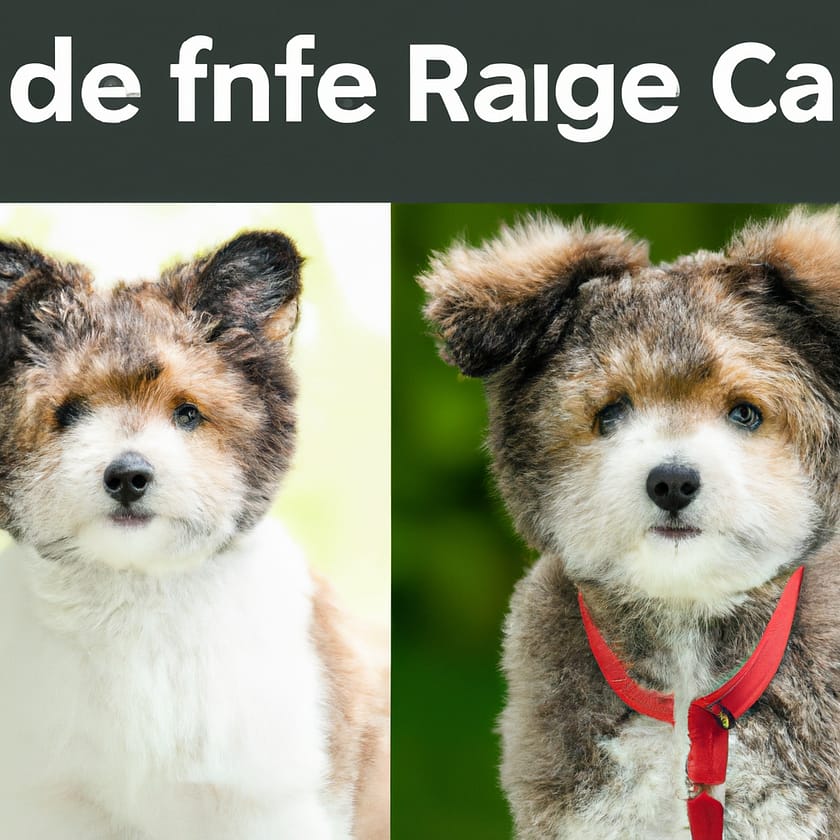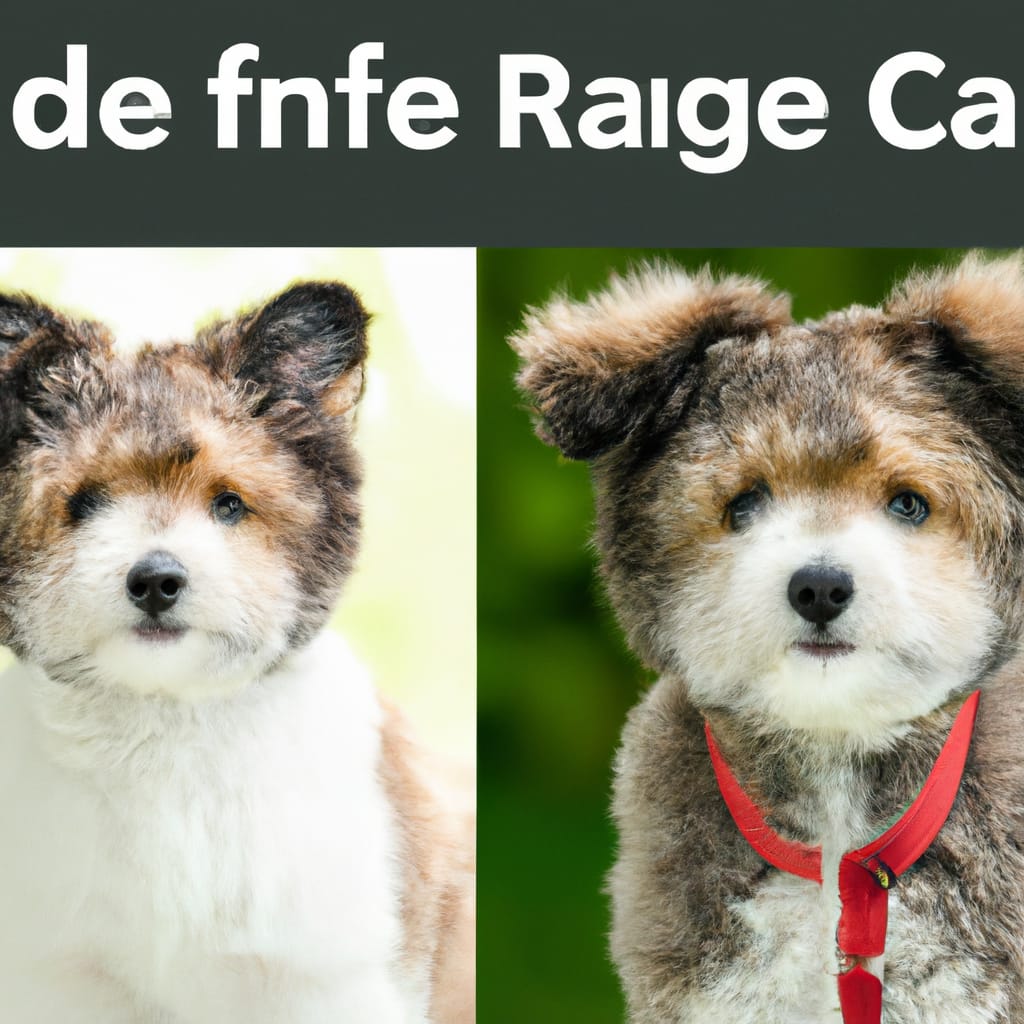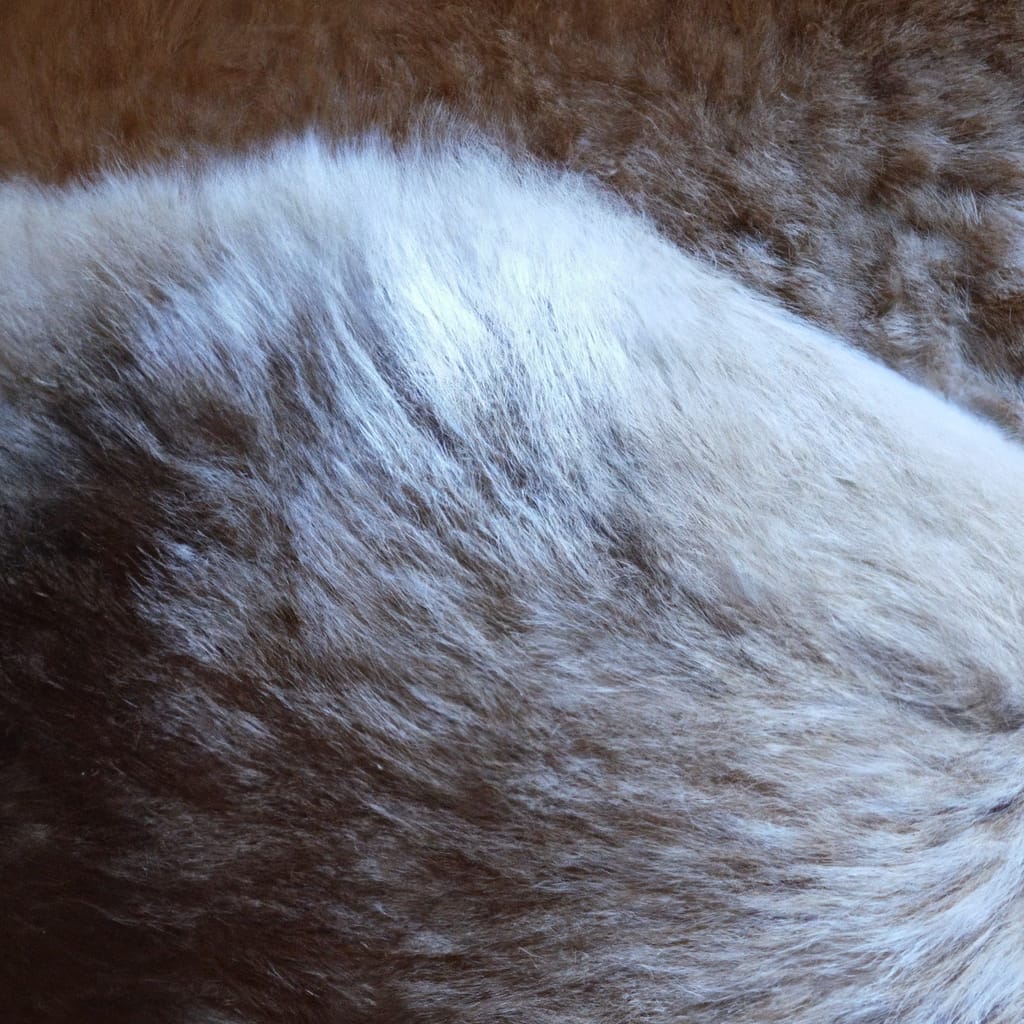Havanese Vs Shih Tzu Breed Comparison
Have you ever wondered about the differences between Havanese and Shih Tzu breeds? In this article, we will explore the characteristics, temperament, and grooming needs of these two beloved furry companions. Whether you are considering getting a new pet or simply curious about the traits of these adorable pups, this comparison will help you understand what makes each breed unique. So, let’s dive into the world of Havanese and Shih Tzu and discover the distinct qualities that make them special additions to any family.

Appearance
Physical Features
The Havanese and Shih Tzu breeds are both small, toy-sized dogs with charming physical features. The Havanese is known for its expressive eyes, which are usually dark but can also be blue or green. They have a compact, sturdy build with a slightly longer body and a plumed tail that curls over their back. On the other hand, Shih Tzus have a distinct facial appearance with large, round eyes and a smushed-in face. They have a well-balanced body and a tail that rests over their back.
Coat Types
One of the notable differences between Havanese and Shih Tzus lies in their coat types. Havanese dogs have a long, silky double coat that can come in a variety of colors, including white, cream, black, chocolate, and more. Their coat requires regular grooming to prevent matting and tangling. On the other hand, Shih Tzus have a dense, luxurious double coat that can be straight or slightly wavy. They are known for their beautiful topknots and flowing, flowing coats that come in various colors, including black, white, gold, and brindle.
Size
In terms of size, both the Havanese and Shih Tzu breeds are small and similar in stature. Havanese dogs typically weigh between 10 to 16 pounds (4.5 to 7.25 kilograms) and stand around 8.5 to 11.5 inches (22 to 29 centimeters) tall at the shoulder. Shih Tzus, on the other hand, are slightly smaller, weighing between 9 to 16 pounds (4 to 7 kilograms) and measuring around 9 to 10.5 inches (23 to 27 centimeters) in height. Despite their small size, both breeds have sturdy, well-proportioned bodies.
Temperament
Personality Traits
Both the Havanese and Shih Tzu breeds are known for their friendly and affectionate personalities, making them excellent companions. Havanese dogs are cheerful, outgoing, and love to be the center of attention. They are sociable with both humans and other animals, making them great family pets. Shih Tzus, on the other hand, are known for their loyalty and affection towards their owners. They are generally friendly but can be a bit reserved with strangers. Shih Tzus thrive on human companionship and enjoy being spoiled with love and attention.
Socialization
Socialization plays a crucial role in shaping a dog’s temperament, and both the Havanese and Shih Tzu require early and ongoing socialization. Introducing them to various people, animals, sights, and sounds from a young age will help them develop into well-rounded and confident dogs. Proper socialization also helps prevent behavioral issues and promotes a positive relationship with their owners and the world around them.
Trainability
When it comes to trainability, both the Havanese and Shih Tzu breeds are intelligent and eager to please, making them relatively easy to train. However, it is essential to keep training sessions short, fun, and positive, as both breeds can be sensitive to harsh or repetitive methods. Positive reinforcement techniques such as rewards, praise, and treats will yield the best results. Consistency and patience are key when training these breeds, as they may occasionally exhibit stubbornness.
Exercise and Activity
Energy Levels
While both the Havanese and Shih Tzu breeds are small, they have varying energy levels. Havanese dogs are generally active and energetic, enjoying regular playtime and outdoor activities. They require moderate exercise levels to keep them mentally and physically stimulated. On the other hand, Shih Tzus have a more moderate energy level and are content with shorter walks and indoor play. They can adapt well to apartment living and do not require intense exercise.
Exercise Requirements
For both breeds, regular exercise is essential to keep them healthy and happy. Havanese dogs benefit from daily walks, interactive play sessions, and opportunities for mental stimulation. They also enjoy activities such as obedience training, agility, and playing fetch. Shih Tzus, on the other hand, have lower exercise requirements and can thrive with shorter walks, indoor playtime, and interactive toys. Overexercising or strenuous activities should be avoided to prevent strain on their small bodies.
Mental Stimulation
In addition to physical exercise, mental stimulation is crucial for the overall well-being of both Havanese and Shih Tzu breeds. Engaging their minds through puzzle toys, interactive games, and obedience training helps prevent boredom and destructive behaviors. Both breeds excel in activities such as obedience training, agility, and tricks that challenge their intelligence and keep their minds sharp.
Grooming and Maintenance
Coat Care
As mentioned earlier, both breeds have different coat types that require regular grooming. Havanese dogs have a long, silky coat that should be brushed at least a few times a week to prevent matting and tangles. They may also need professional grooming every few months to maintain their coat’s health and appearance. Shih Tzus have a dense, long coat that should be brushed daily to prevent matting and tangling. Occasional trimming of their facial hair and frequent visits to a professional groomer are necessary to keep their coat in top condition.
Shedding
In terms of shedding, Havanese dogs are considered a low-shedding breed. Their long hairs tend to stay in their coat instead of falling out, which makes them suitable for individuals with allergies or those who prefer a cleaner home. Shih Tzus, on the other hand, are known to be moderate shedders. Their long, dense coats require regular brushing to prevent loose hairs from accumulating around the house. Routine grooming and sweeping can help minimize the impact of shedding.
Bathing and Haircuts
Both the Havanese and Shih Tzu breeds require regular bathing and haircuts to maintain their appearance and hygiene. Havanese dogs should be bathed every few weeks, or as needed, using a mild dog shampoo to avoid drying out their skin. Their long hair should be trimmed periodically to prevent it from dragging on the ground and getting dirty. Shih Tzus should also be bathed regularly, and their hair should be trimmed to a manageable length to prevent matting and hygiene issues.

Health and Lifespan
Common Health Issues
Like any breed, Havanese and Shih Tzus are prone to certain health issues. Havanese dogs may be susceptible to conditions such as patellar luxation, heart murmurs, progressive retinal atrophy (PRA), and certain allergies. Shih Tzus, on the other hand, are prone to brachycephalic airway syndrome, which can cause breathing difficulties due to their smushed-in face. They may also experience eye problems, dental issues, and allergies.
Life Expectancy
On average, both the Havanese and Shih Tzu breeds have a relatively long lifespan. Havanese dogs typically live between 14 to 16 years, while Shih Tzus have a slightly shorter lifespan of around 10 to 16 years. Proper care, a balanced diet, regular exercise, and routine vet check-ups can contribute to their longevity and overall health.
Maintenance Costs
When considering owning a Havanese or Shih Tzu, it’s important to factor in the costs associated with maintaining their health and well-being. Both breeds require regular vet visits for vaccinations, check-ups, and preventative care. Additionally, grooming expenses, including professional grooming and grooming tools, should be considered. The cost of quality dog food, treats, toys, and other supplies should also be taken into account. It’s essential to budget for these expenses to provide the best care for your furry friend.
Hypoallergenic Qualities
Allergies
Hypoallergenic qualities are often a significant consideration for individuals with allergies. While no dog breed is entirely hypoallergenic, both the Havanese and Shih Tzu breeds are considered hypoallergenic to some extent. Their minimal shedding, coupled with their specific coat types, can help reduce the amount of allergens in the environment, making them more suitable for individuals with allergies.
Dander Production
Dander, which is dead skin cells shed by dogs, is a common allergen for people with allergies. Havanese dogs and Shih Tzus produce less dander compared to breeds with heavier shedding coats, making them potentially less likely to cause allergic reactions. However, it’s important to note that every individual may react differently to different breeds, and spending time with the specific breed you are considering is the best way to determine its compatibility with your allergies.
Suitability for Allergenic Individuals
Both the Havanese and Shih Tzu breeds can be suitable for individuals with allergies, but it ultimately depends on the individual’s level of sensitivity. Some individuals with allergies may still experience allergic reactions, even with hypoallergenic breeds. It is recommended that individuals with allergies spend time with the specific breed they are considering to assess their reaction before making a decision.
Compatibility with Children and Other Pets
Interaction with Children
Both the Havanese and Shih Tzu breeds are generally well-suited for families with children. They are known to be friendly, gentle, and patient, making them great playmates for kids. However, it is important to supervise interactions between dogs and children to ensure the safety and well-being of both parties. Teaching children how to properly handle and interact with dogs is crucial to prevent any potential accidents or stressful situations.
Interaction with Other Pets
Similarly, both the Havanese and Shih Tzu breeds can get along well with other pets when properly socialized from a young age. They are generally friendly and adaptable, making it easier for them to form positive relationships with other animals. However, it’s important to introduce new pets slowly and allow them to gradually acclimate to one another to ensure a harmonious coexistence.
Precautions
While Havanese and Shih Tzus are generally good with children and other pets, it is crucial to teach children how to properly interact with dogs and supervise their interactions. Additionally, introducing new pets gradually, providing separate spaces for each pet if needed, and monitoring their interactions can help prevent any potential conflicts or territorial issues.
Breed History
Origin and Purpose
The Havanese breed originated in Cuba and has a rich history dating back to the 1500s. They were originally bred as companion dogs for Cuban aristocrats and were loved for their charming personalities and appealing appearance. Havanese dogs excelled at providing companionship and were often seen performing tricks and entertaining their owners. Shih Tzus, on the other hand, originated in ancient China and were highly prized by Chinese royals. They were bred as companion dogs and were considered sacred, believed to bring good luck and prosperity to their owners.
Recognition and Popularity
Both the Havanese and Shih Tzu breeds are recognized by various kennel clubs and breed organizations around the world. The Havanese is recognized by the American Kennel Club (AKC), the United Kennel Club (UKC), and the Canadian Kennel Club (CKC). The Shih Tzu is also recognized by the AKC, UKC, and CKC, among others. These breeds are generally popular among dog lovers due to their friendly nature, adorable appearance, and suitability as family pets.
Breed Standards
The Havanese and Shih Tzu breeds have specific breed standards that outline their ideal characteristics and physical features. These standards are set by kennel clubs and breed organizations to ensure consistency in breed type. Breed standards include details about their appearance, temperament, structure, and more. It is important to understand and consider these standards when selecting a Havanese or Shih Tzu to ensure you are getting a well-bred dog that meets the breed’s overall traits and characteristics.
Adoption and Acquisition
Rescue Centers
Adopting a Havanese or Shih Tzu from rescue centers and shelters is a wonderful way to provide a loving home to a dog in need. There are numerous rescue organizations specifically dedicated to these breeds, allowing prospective owners to find their perfect furry companion. Rescues provide an opportunity to provide a second chance to a dog and can be a rewarding experience for both the owner and the pet.
Breeders
Finding a reputable breeder is crucial when considering acquiring a Havanese or Shih Tzu. Responsible breeders prioritize the health and well-being of their dogs and strive to produce puppies with sound temperaments and adherence to breed standards. It is important to research and choose a breeder who conducts health testing, provides appropriate socialization for the puppies, and offers ongoing support to the new owners. Reputable breeders will be transparent about the breed’s potential health issues and provide thorough documentation.
Costs
The cost of acquiring a Havanese or Shih Tzu can vary depending on various factors such as breeder reputation, location, pedigree, and availability. It is important to budget for not only the initial cost of purchasing a puppy but also ongoing expenses such as veterinary care, food, grooming, and supplies. Additionally, adoption fees from rescue centers may vary, but they often include necessary vaccinations, spaying/neutering, and some initial medical care.
Conclusion
Both the Havanese and Shih Tzu breeds have their unique characteristics and qualities that make them wonderful companions. When choosing between the two, consider your lifestyle, preferences, and the time and effort you can invest in their care. Both breeds require love, attention, and commitment to ensure they lead happy and healthy lives. Whether you choose a Havanese or a Shih Tzu, you’ll have a loyal, affectionate, and adorable companion by your side.













